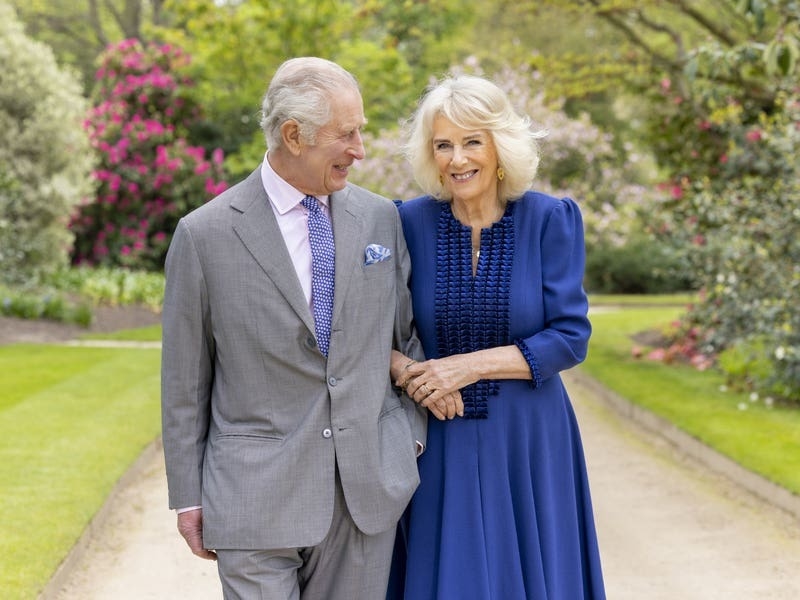Victoria Village is a small area of Trinity that was, for much of its history, a mostly agricultural settlement. On the 1795 Richmond Map the area is dominated by orchards with a small number of farm houses evident at the time.
The 1849 Godfray Map shows hardly any change at all with only a few new properties in the area and fields still dominating.
It wasn’t until the second half of the 20th century that development in the area really began with residential properties being built in Le Clos Vert, Victoria Village Estate, Victoria Village Close and Le Jardin du Puits on former farming land.
When looking at Victoria Village it would be very tempting to think that it was a quiet rural area where not a lot happened and while in the main this is true there have been some extraordinary and tragic occurrences that have taken place.
In September 1894 the peace of the area was shattered. François Mourant and Elizabeth Jane Le Brun Mourant, née Perchard, had been married the previous year at St Saviour’s Church and had moved into the Victoria Village area, renting a property owned by Thomas Drelaud.
On the morning of 17 September Elizabeth had asked François if he wanted to go sandeeling and when he said no she went out with her mother instead. She returned in the evening and seeing that he was in called out to him on a number of occasions. When not receiving any response she walked into his room. She was met by a double barrelled muzzle loader being shot point blank, ripping through her face. She fell to the floor and François fled through the window to escape.
She received 40-60 shrapnel wounds to her face and body but amazingly she survived. Elizabeth was transferred to the hospital in a critical condition. Her left eye was removed, her right was damaged and she suffered grievous injury and pain but she recovered enough to testify at her husband’s criminal trial.
The honorary police searched for Mourant in the night but it was the following morning when he was found in the pub of George Drelaud, Thomas’ son, which was called the Victoria Inn.
After a trial the majority of the jurors found him guilty of the charge of attempted murder. He was sentenced to seven years of penal servitude. In his summing up the Bailiff seemed bemused as to what Mourant’s motivations were for the attack but he did express the hope that when Mourant returned to the Island he would be a changed man.
Another shocking incident took place in 1901. On 12 May John Wallace Cabot, a farmer’s son of 31 years of age, was found dead in a field called La Demoiselle. An inquest took place in order to ascertain exactly what had taken place. Various witnesses were called to talk about Cabot’s movements the previous night. He was seen to have bought alcohol from the shops of Miss Le Quesne and Miss Rondel in the area. One witness, Ernest Le Bechec, testified that he had heard the deceased at 10 pm but had not seen him. Miss Le Quesne, owner of one of the shops in the area, then deposed that Le Bechec had purchased a bottle of brandy from her. He was called back to the stand and admitted he had bought the alcohol but denied drinking it with the deceased.
When the post-mortem revealed that a fractured skull was the cause of death with the Viscount saying that it must have involved a great deal of violence the evidence was re-examined.
Ernest Le Bechec came under the spotlight once more and it came out that he had been one of a group who had been drinking with Cabot that night. They got into argument after Cabot commented on Le Bechec receiving welfare from the parish which led to him pushing him down.
The jury was split but enough found Le Bechec guilty to mean that he was convicted of assault with extenuating circumstances. His sentence was set at three months hard labour.
Miss Le Quesne, who owned the shop where Le Bechec bought the alcohol, was also affected. When it came time to renew her alcohol licence she was rejected by the Licensing Assembly. Advocate Alavoine, who was representing her, said that his client had kept a house for 21 years and that he didn’t know of any complaints that had been received against her.
The Bailiff brought up the Le Bechec case and said that she had sold the bottle of alcohol to minors and had allowed them to drink the bottle practically on her doorstep and the consequence was the tragedy taking place. The application was unanimously rejected by the committee.
The property that Miss Le Quesne ran her business from and lived at is one that no longer exists in the Victoria Village area, that of Transvaal House. Transvaal House was on the corner of Rue de la Boucterie and Rue de la Guilleaumerie. The Le Quesnes owned the property for many years with contracts recording that Charles Le Quesne had inherited the property from his parents, Philippe Le Quesne and Mary Gallichan.
In March 1968 Transvaal House was sold out of the Le Quesne family by Clifford George Ollivier. He was the oldest son of the late Robert George Ollivier and his wife Emelia Marett Le Quesne.
The purchaser, local businessman Kenneth Barnes, wanted to develop the area for private housing. Mr Barnes discussed the best way of demolishing the dilapidated property with parish authorities and it was decided that the best solution would be to burn it down. Trinity Constable at the time, Edgar Mourant, had the honour of throwing the match into the building to ignite the flames and he, together with the fire brigade, watched as the fire raged for over two hours.
A well-known resident in later years was naturalist Roderick Dobson. Dobson was born in Derbyshire in 1907. On leaving school he went to Sri Lanka in 1926 to take up tea planting and while there he made a collection of eggs of the island’s birds. In 1933 he presented his collection to the National Museum of Ceylon.
In 1934, after his marriage to Winifred King in Australia, the Dobsons moved to Europe, settling in Jersey. He purchased La Ruette in Victoria Village in July of that year as well as fields around the area and set about becoming a grower. He and his wife are registered as living there during the Occupation.
Dobson went on to write the book, Birds of the Channel Islands, published in 1950, which became a standard text on the subject. Later on he concentrated on natural history filmmaking, with the BBC broadcasting four of his films.
Of course, growing of a different kind takes place in the area now with the Eric Young Orchid Foundation now firmly established as a tourist attraction in the village.
- This article only touches on some of the stories of Victoria Village. If you would like to find out more, the Jersey Archive will be hosting a talk at 10 am on Saturday 16 June as part of the Le Gallais-sponsored What’s Your Street’s Story? project. This month’s talk has seen a team of volunteers help Jersey Archive staff research the area. The Archive is open from 9 am to 1 pm on 16 June to encourage you to come and find out more about the history and people of your area. If you would like to book your place on the talk please call Jersey Archive on 833300.






